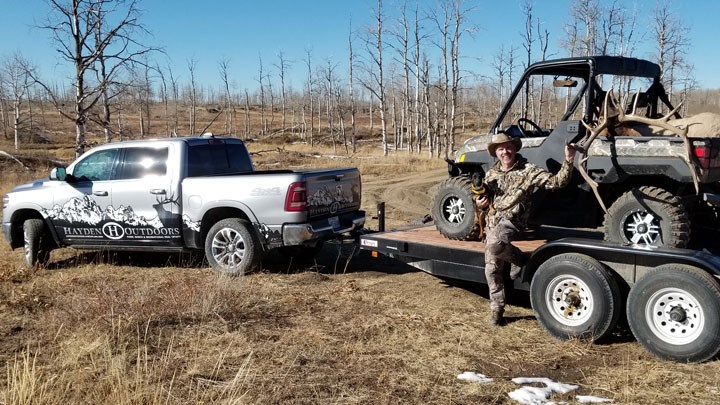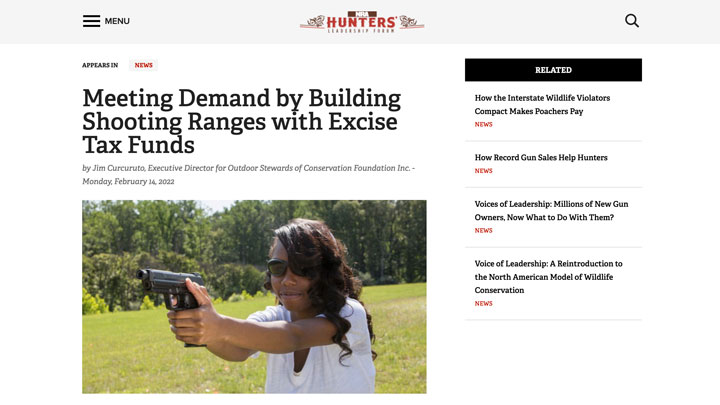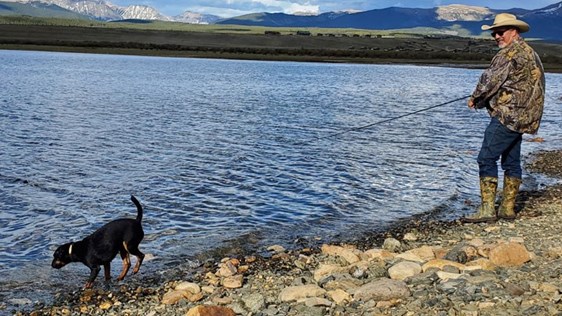
by Phil Phillips - Thursday, February 17, 2022

Congratulations to all of us who hunt, shoot and fish as we continue to set records in what we pay to conserve our renewable fish and wildlife resources every year. On Feb. 11 the Interior Department’s U.S. Fish and Wildlife Service (USFWS) announced that a record $1.5 billion will be distributed to state wildlife agencies for wildlife and habitat conservation and outdoor recreation initiatives in 2022 through America’s renown Wildlife and Sport Fish Restoration (WSFR) Program. This level of funding sheds light on the impact we have on the outdoor recreation economy, which has grown even more since the pandemic as we continue to set records for excise taxes paid on firearms, bows, ammunition, fishing tackle and boating gear. Just as important, it shows how critical hunting, fishing and the shooting sports are to America’s fish and wildlife conservation efforts.
As explained in Friday’s announcement, Congress authorizes WSFR disbursements through the Pittman-Robertson Federal Aid in Wildlife Restoration Act (1937) and Dingell-Johnson/Wallop-Breaux Federal Aid in Sport Fish Restoration Act (1950). To date, the USFWS has distributed more than $25.5 billion in apportionments for state conservation and recreation projects. The recipient state wildlife agencies have matched these funds with approximately $8.5 billion through the years, primarily through hunting and fishing license revenues.
It is fitting that sportsmen and women pay to sustain fish and wildlife and the agencies that manage them, but what usually goes unnoticed is that we carry the water for everyone else who partakes in the outdoors. We must communicate this to those who do not hunt, shoot or fish. Remind all who enjoy the outdoors that the whitetail buck, bull elk or wild turkey they're viewing was brought back from the brink of extinction in the last century by sportsmen, who paid to reintroduce and rebuild these native species’ populations and their habitats.
According to USFWS Director Martha Williams, “Many Americans are unaware of the remarkable conservation impact of the Wildlife and Sport Fish Restoration Program. State wildlife agencies dedicate WSFR funds to a variety of conservation projects and programs such as hunting and fishing education, fish and wildlife management, scientific research, habitat restoration and protection, land and water rights acquisition, and hunting and boating access. Everyone benefits from these investments, which have ensured a legacy of wildlife and outdoor opportunities for all.”
According to an NRA Hunters’ Leadership Forum website article “Meeting Demand by Building Shooting Ranges with Excise Taxes” from earlier this week, another primary use of our excise tax funds includes shooting range enhancement and development. This is important as the article points out that 35 million firearms have been sold since the start of the pandemic and that 10-million-plus Americans have become first-time gun owners.

“Some good news is that state agencies have already used excise tax funds to support development of nearly 800 shooting ranges across the nation,” the author notes. “Legislation supported by the NRA and the Association of Fish and Wildlife Agencies in 2019—the Target Practice and Marksmanship Training Support Act—has made it easier for state agencies to use excise tax funds for such purposes and agencies are starting to take advantage of the new incentives.” (To read the full article and help your community to sustain this fast-paced growth click here.
For those unaware of how the USFWS goes about dispersing WSFR funds, states receive their funding through formula-based permanent appropriations. The distribution formulas are based primarily on land and water area and the number of paid recreational hunting and fishing license holders in each state. State fish and wildlife agencies make their own management decisions about how the funds are used. The WSFR dollars typically fund up to 75 percent of project costs. Most states must provide a matching share of up to 25 percent, usually from state hunting and fishing license revenues.
To see how your state stacks up in the annual payout of WSFR funds for 2022, click here. The 56 agencies receiving funding include the 50 U.S. states, the District of Columbia and five U.S. territories: American Samoa, Guam, North Mariana Islands, Puerto Rico and the Virgin Islands.
All who come across this announcement should thank a hunter or angler. In fact, my home state of Colorado does just that through the Colorado Wildlife Council’s creative “Hug a Hunter and Angler” ad campaign. Turn on the TV and you'll see a variety of 30-second spots that immediately grab your attention as wildlife species thank hunters for the fact that conservation happens because of hunter funding. Maybe we can urge more states to develop wildlife councils to help explain that the conservation of our renewable fish and wildlife resources and their habitats happens because of hunting, fishing and the shooting sports.
About the Author
Outdoor writer, TV host and farm/ranch real estate associate broker Phil Phillips has hunted five continents, taking nearly 60 species worldwide. Prior to hosting hunting programs, he started Colorado's first Ranching for Wildlife Program for antelope. Working alongside professional land managers, he went on to guide clients to 500-plus big-game animals and was named Safari Club International’s (SCI) North American Bowhunting Outfitter of the Year. A Life member of hunter-backed organizations including the NRA, Mule Deer Foundation, Dallas Safari Club, Houston Safari Club Foundation and Safari Club International, he can be reached at [email protected].
E-mail your comments/questions about this site to:
[email protected]
Proudly supported by The NRA Foundation and Friends of NRA fundraising.
